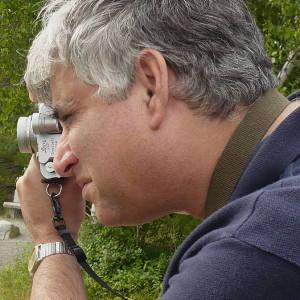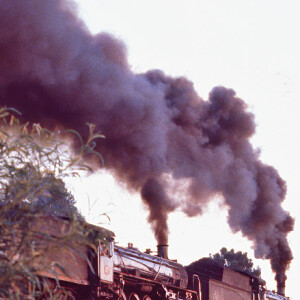One Never Forgets One's First Double-Header.
Today, after some deliberation, I decided to spring for a De-Noising program which employs Artificial Intelligence to extrapolate information on an old negative or slide, and remove the emulsion noise and resulting softness. I have just run three old images through the program, and want to share the results. The difference is quite astounding. One has to have a delicate touch; it’s easy to over-do things and end up with a totally artificial-looking image. I hear the Blip Police helicopters ffft-ffft-ing in the distance as I publish these old photographs, but, in a sense, it’s almost as if they were taken today.
Here's the background: My family used to visit the small, tidy university town of Grahamstown – now Makhanda, in South Africa -, every winter holiday from about 1963. My uncle, and aunt – Crispin25’s mom -, had moved there from their farm near Cradock in the Eastern Cape. Grahamstown is set in a shallow valley surrounded by heavily wooded hills. Back then, it had a very busy secondary railway line which connected with the Cape Midlands Mainline at Alicedale, about 40 miles away. The Grahamtown branch was distinguished by having some of the heaviest grades of any railway in South Africa – a ruling grade of 1:40 or 2.5% -, making the climb out of town an ordeal for the steam locomotives which hauled the trains. Leaving the station, the track alignment was fairly straight, passing through numerous level crossings in the town, the drivers indulging in much whistle-blowing; flag-waving on the part of the crossing guards. Then the track followed a huge horse-shoe bend to gain height out of the valley, doubling back on itself before commencing a meandering journey as it followed every fold of the land on the way to Alicedale.
The photographs which accompany this essay were taken in July 1979. I would take my camera and tripod, and figure out the best spots to photograph the hard-working steam locomotives. One such location was at my old haunt, the Fitzroy Street crossing. The light was failing fast - July is mid-winter in South Africa. The train could be heard departing the station down in the town, and a few minutes later it heralded its arrival in my viewfinder with an enormous column of black coal smoke, which did nothing to help my dire light situation. I waited until the locomotive was in the middle of my frame and released the shutter. In my eagerness, I clicked a little too soon, but there was no time to rewind and try again. I looked out from behind the camera to discover that there were TWO locomotives! Over the years, I have tried to breathe some life into this first photograph, without significant success. The original frame was under-exposed because of the low light. I was never happy with the results. Today is the day that these images, taken on High Speed Ektachrome, using a Leica M2 with 1937 Elmar 90mm lens, have reached the digital age in a form which our “digitized” eyes have come to see as the norm. Film emulsion and Gaussian blur are, well, SO ‘70s.
I thought I’d botched my first shot... Nothing for it: break down the tripod, jump in the car and rush out of town to waylay the train at the next spot up the hill. Fortunately, this was quite easy since the railway followed such a circuitous course. I got to that next spot with plenty of time to spare, and found the light to be much better because the track was no longer shaded by deep shadows in the valley. I was now in the front yard of the local prison… At this location, I got my second shot at the double-header, working hard and belching black smoke. Here it is as an Extra. Perhaps this is the better photograph, but that first image brings so many warm memories flooding back. It has to be the Main. The third photograph in the series, at the same spot in the prison yard, catches the locomotives as they head off west into the sunset. Here they are as the second Extra.



Comments
Sign in or get an account to comment.


